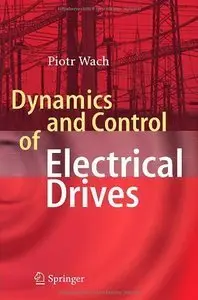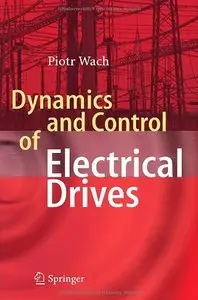Piotr Wach, "Dynamics and Control of Electrical Drives"
2011 | ISBN: 3642202217 | 476 pages | PDF | 3 MB
2011 | ISBN: 3642202217 | 476 pages | PDF | 3 MB
Dynamics is a science concerned with movement and changes. In the most general approach it relates to life processes as well as behavior in nature in rest. It governs small particles, technical objects, conversion of matter and materials but also concerns people, groups of people in their individual and, in particular, social dimension.
In dynamics we always have to do with causes or stimuli for motion, the rules of reaction or behavior and its result in the form of trajectory of changes.
This book is devoted to dynamics of a wide class of specific but very important objects such as electromechanical systems. This is a very rigorous discipline and has a long tradition, as its theoretical bases were formulated in the first half of the XIX century by d’ Alembert, Lagrange, Hamilton, Maxwell and other prominent scientists, but their crucial results were based on previous pioneering research of others such as Copernicus, Galileo, Newton…
This book in its theoretical foundations is based on the principle of least action which governs classical as well as relativistic mechanics and electromagnetism and leads to Lagrange’s equations which are applied in the book as universal method to construct equations of motion of electromechanical systems. It gives common and coherent grounds to formulate mathematical models for all lumped parameters’ electromechanical systems, which are vital in our contemporary industry and civilized everyday life.
From these remarks it seems that the book is general and theoretical but in fact it is a very practical one concerning modern electrical drives in a broad sense, including electromechanical energy conversion, induction motor drives, brushless DC drives with a permanent magnet excitation and switched reluctance machines (SRM). And of course their control, which means shaping of their trajectories of motion using modern tools, their designed autonomy in keeping a track according to our programmed expectations.
The problems presented in the book are widely illustrated by characteristics, trajectories, dynamic courses all computed by use of developed simulation models throughout the book. There are some classical subjects and the history of the discipline is discussed but finally all modern tools and means are presented and applied.
More detailed descriptions follow in abstracts for the particular chapters.



